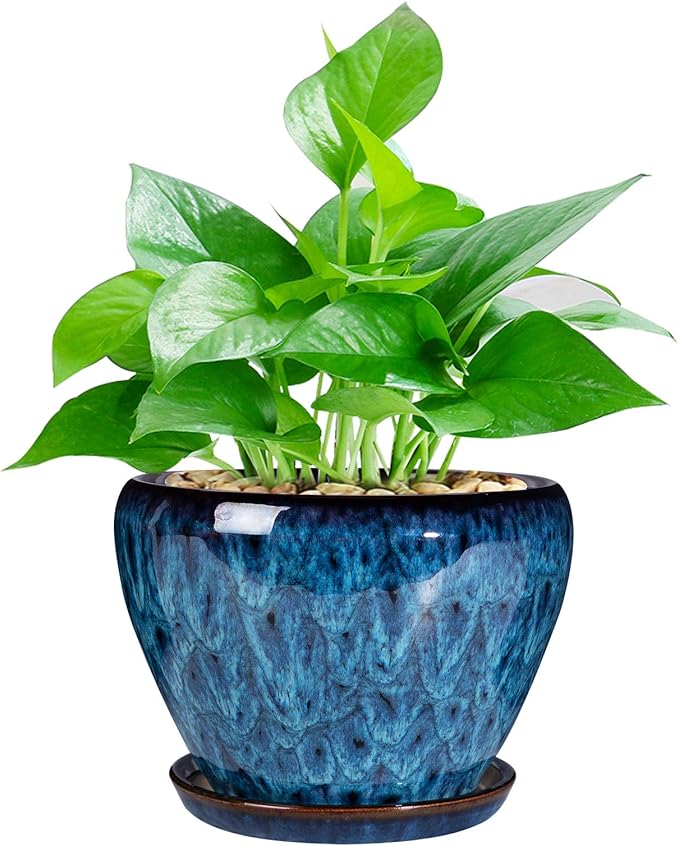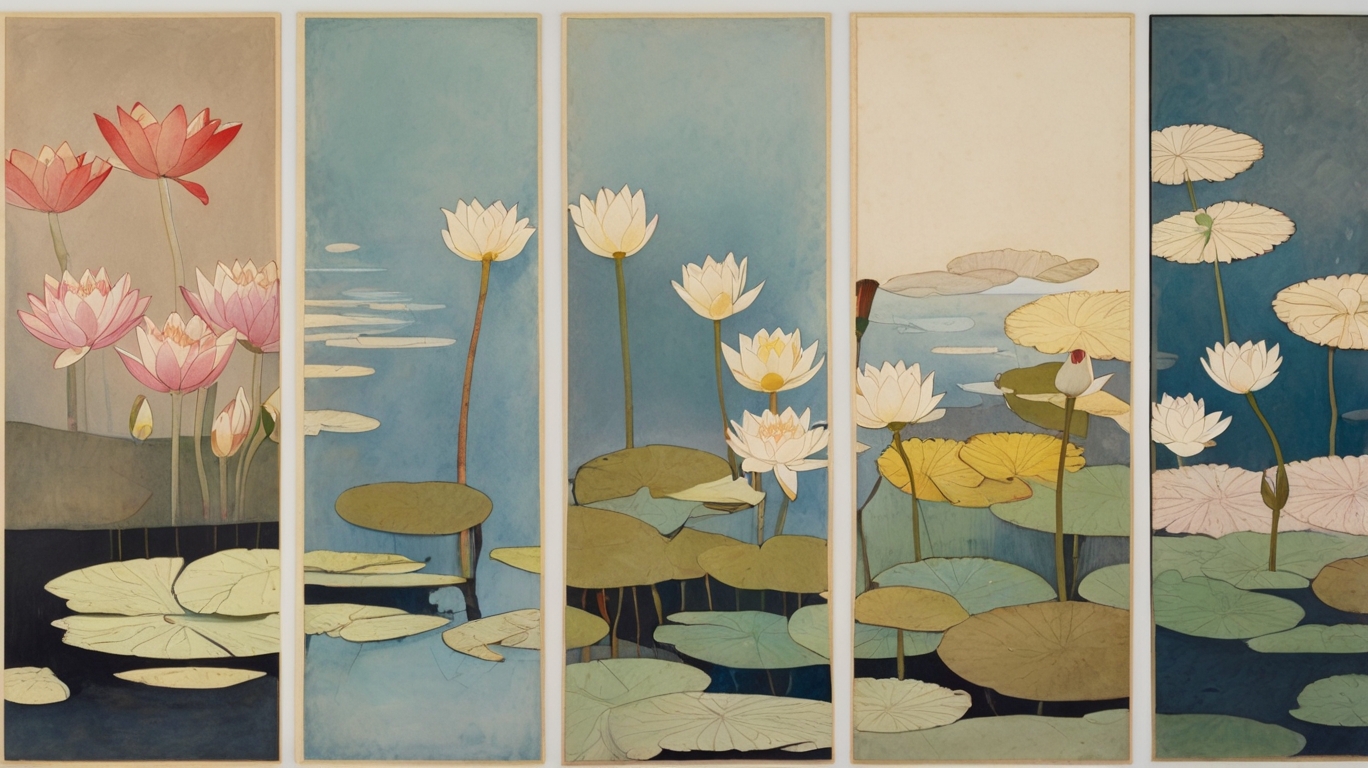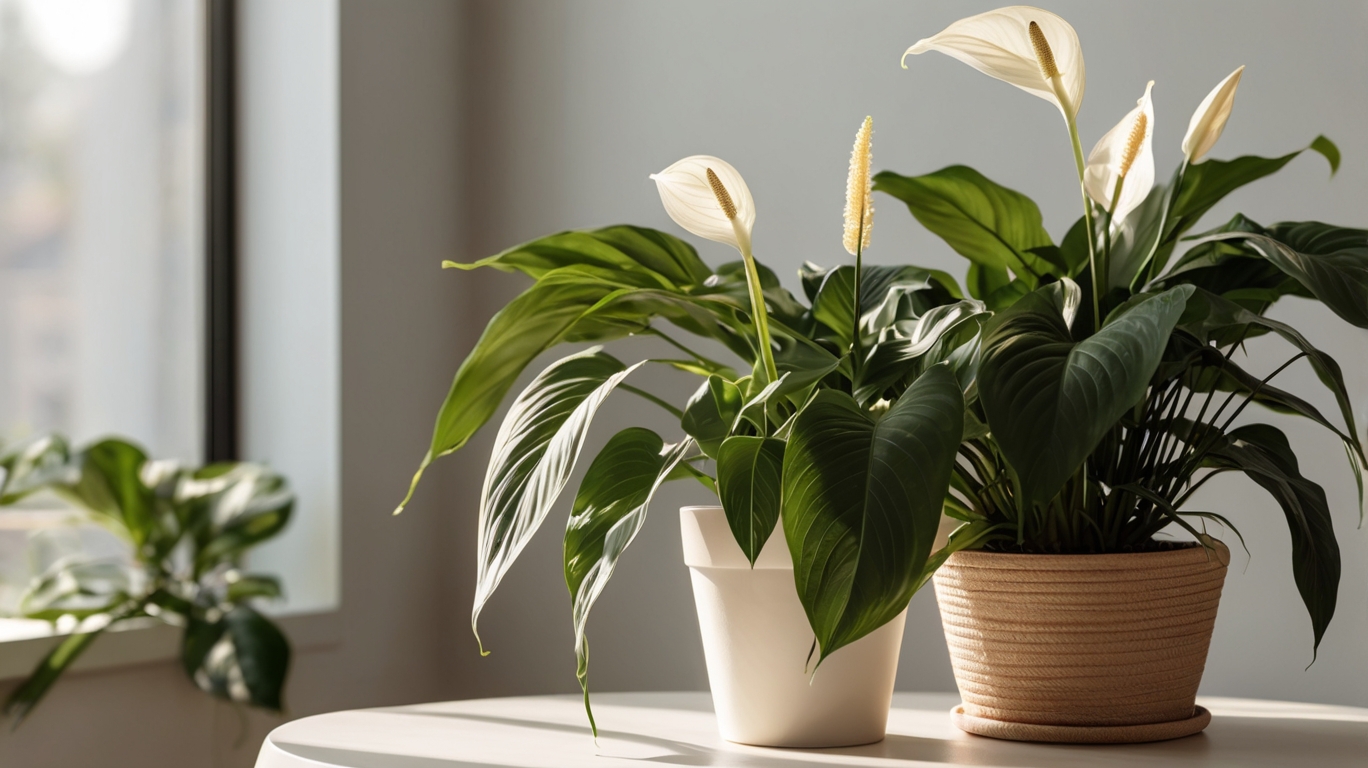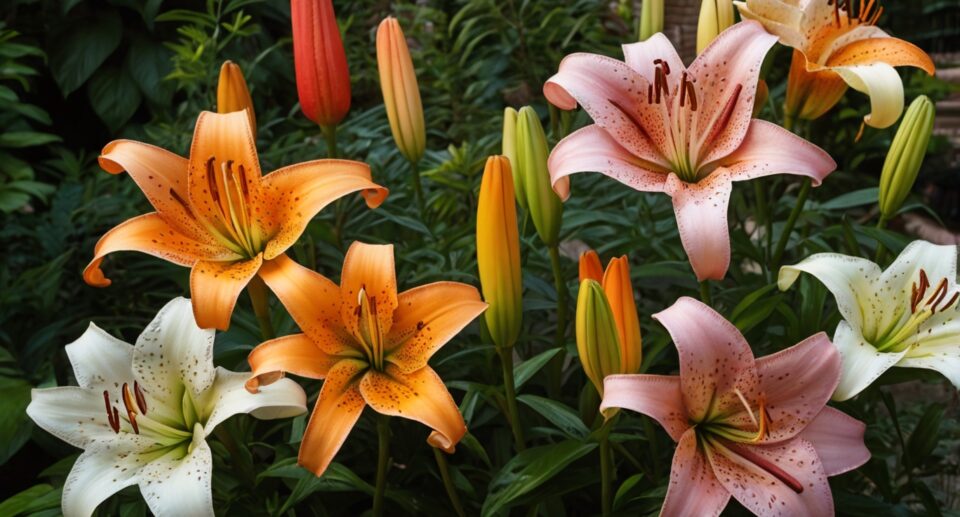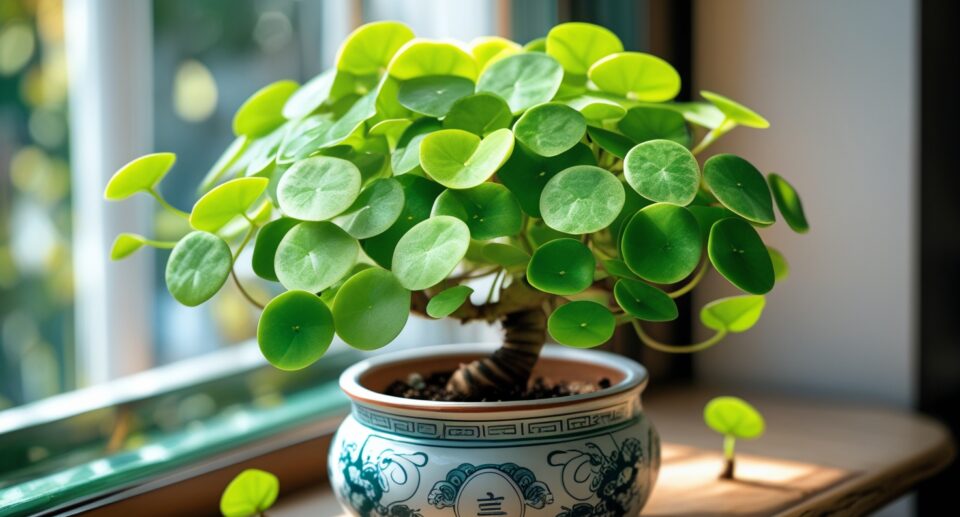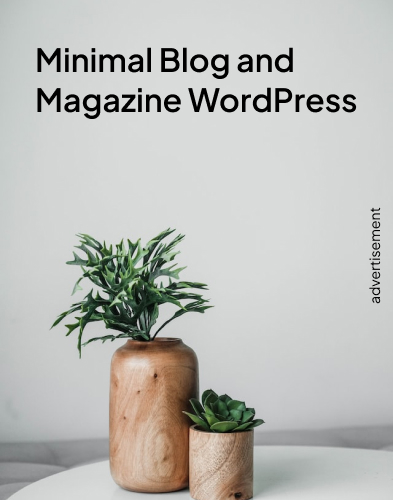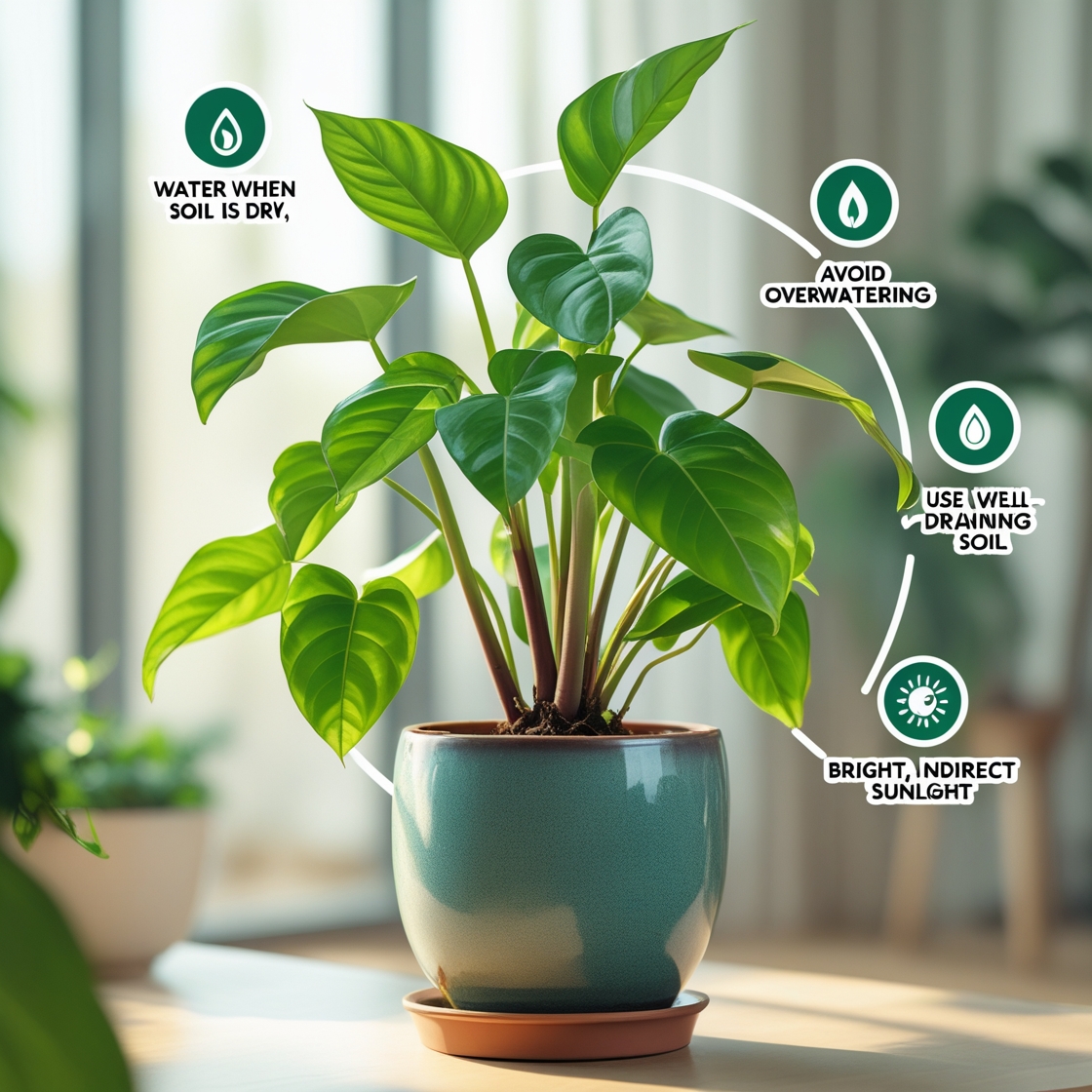How Do I Successfully Plant a Money Tree Plant? Step-by-Step Guide #1

Introduction to the Money Tree Plant: Myth vs Reality
The Money Tree Plant, scientifically known as Pachira aquatica, has become a favorite among indoor plant enthusiasts due to its striking appearance, minimal care requirements, and connection to cultural symbolism. Its braided trunk and lush, green leaves evoke both curiosity and admiration, making it a sought-after addition to homes and offices. However, this particular plant is surrounded by myths that sometimes overshadow its actual characteristics.
One of the most popular myths is its supposed ability to bring financial prosperity and good fortune to its owner. This belief originates from Feng Shui, an ancient Chinese practice that emphasizes harmony and energy flow. In Feng Shui traditions, the money tree plant is thought to attract positive energy when placed in specific areas of the home or workplace, such as a wealth corner. While many individuals embrace this idea, there is no scientific evidence to support claims of increased wealth directly tied to owning the plant.
Aside from its symbolic associations, the plant itself has practical qualities that make it appealing. Unlike what the myth suggests, the Money Tree Plant does not miraculously generate money but does offer other benefits. It is known for being easy to care for, thriving indoors under indirect light and tolerating occasional watering lapses. Its ability to purify air is another reason many people choose it to enhance their living spaces.
Understanding the reality behind the Money Tree Plant’s reputation helps balance expectations. A closer look reveals it to be just as valuable for its aesthetic and natural qualities as for its symbolic meaning. Its charm lies in its resilience, adaptability, and low-maintenance nature rather than in magical powers. By appreciating the plant for what it genuinely offers, growers can cultivate it with realistic expectations while harnessing its symbolic potential.

Choosing the Perfect Spot for Your Money Tree Plant
Selecting the ideal location for a Money Tree (Pachira aquatica) is crucial for its growth and vitality. This plant thrives indoors, but its placement should align with its light, temperature, and humidity preferences to ensure a healthy and vibrant appearance.
Lighting Requirements
A Money Tree flourishes in bright, indirect sunlight. Direct rays can scorch its leaves, while insufficient light may stunt its growth. It is recommended to position the plant near a window that provides filtered light or in a well-lit room. South- or east-facing windows are often ideal. If natural light is limited, consider supplementing with grow lights to maintain a steady environment.
Temperature and Humidity
The Money Tree prefers a warm and stable environment. Temperatures between 65°F and 75°F (18°C to 24°C) are ideal for this tropical plant. It should be kept away from drafts caused by air vents, open windows, or heaters, as sudden temperature changes can impact its health. High humidity mirrors its native habitat, making bathrooms and kitchens great options for placement. Alternatively, use a humidifier or mist the leaves to maintain adequate moisture.
Space Considerations
When choosing a location, it is essential to leave enough space for the plant to grow. Money Trees can reach heights of 6 to 8 feet indoors, depending on care. Select an area that accommodates its size without crowding or obstructing other items. A spacious corner or near furniture like a table can work effectively, keeping it out of direct traffic paths.
Feng Shui and Aesthetic Appeal
For those interested in the spiritual aspects of placement, consider Feng Shui principles. The Money Tree is often associated with prosperity and positive energy. According to these beliefs, placing the plant in the southeast corner of a home or office can enhance its symbolic benefits. Additionally, its braided trunk and lush leaves make it a stunning decorative accent wherever it is placed.
Attention to the plant’s needs and careful planning for its placement will help ensure long-lasting growth and contribute positively to the indoor environment.
Essential Tools and Supplies for Planting
When embarking on the journey to plant a money tree, understanding and gathering the necessary tools and supplies is crucial for success. The right materials ensure proper growing conditions and simplify the planting process, helping the tree thrive. Below is a comprehensive list of what is required:
Tools to Gather
- Pot or Container: Select a pot with drainage holes to prevent waterlogging. A sturdy pot that matches the tree’s size is ideal for optimal growth and stability.
- Gardening Trowel: A small hand shovel is essential for digging, transporting soil, and gently placing the sapling into the pot or ground.
- Pruning Shears: These will be needed to trim any damaged roots or leaves and maintain the tree’s health as it grows.
- Gloves: Durable gloves protect hands from dirt and potential injuries during the planting process.
Supplies Needed
- Potting Soil: Use well-draining, nutrient-rich soil tailored to indoor plants. It often includes ingredients like peat moss or perlite for proper drainage.
- Fertilizer: A balanced liquid fertilizer works best for money trees, promoting growth and lush foliage.
- Pebbles or Stones: These can be placed at the bottom of the pot to enhance drainage and reduce the risk of root rot.
- Watering Can: Choose one with a narrow spout to control water flow and avoid overwatering.
Additional Items to Consider
- Grow Light: For areas lacking sufficient sunlight, a grow light ensures the plant receives the necessary brightness for photosynthesis.
- Humidity Tray: Money trees thrive in humid environments, so a tray with water and pebbles beneath the pot can help maintain humidity levels.
Having all of these tools and supplies prepared in advance will streamline the planting process and create an ideal environment for the money tree to grow healthily.
Selecting the Right Pot and Soil for Your Money Tree
Choosing an appropriate pot and soil is crucial for the healthy growth of a money tree. The pot should be both functional and supportive of the tree’s growing needs. When selecting a pot, consider its size and drainage capabilities as top priorities.
Selecting the Pot
- Size Matters The pot should be large enough to accommodate the roots of your money tree but not excessively oversized. A pot that is too large can result in water pooling in the soil, which encourages root rot. Typically, a pot that is one to two inches wider in diameter than the root ball of the money tree is ideal.
- Drainage is Essential A pot with drainage holes at the bottom is highly recommended. These holes allow excess water to escape, preventing overwatering and reducing the risk of fungal diseases. If the chosen pot lacks drainage holes, it’s advisable to add them or use a drainage layer like small gravel at the bottom of the pot.
- Material Options Clay, ceramic, plastic, and metal pots are common choices. Terracotta pots are beneficial for their breathability, as they allow moisture to evaporate, reducing the likelihood of soggy soil. However, plastic pots retain moisture longer, which may be better for those who tend to underwater their plants.
Choosing the Soil
The soil for a money tree must support its tropical origins while ensuring proper drainage. Heavy soils or overly compacted mediums can smother the roots and stagnate their growth.
- Well-Draining Soil A recommended soil mix includes peat moss, perlite, and loam. These materials balance water retention and drainage, ensuring the roots stay moist without becoming waterlogged.
- pH Balance A slightly acidic to neutral soil pH is optimal for Money Tree Plants. A pH range around 6.0–7.5 encourages healthy nutrient absorption.
- Avoid Over-Compacted Soil Light soil texture is essential to provide oxygen circulation around the roots. Amend heavy soils with coarse materials like sand or bark to loosen them.
Matching the correct pot and soil to the plant’s needs significantly impacts the overall health and longevity of a money tree. Select materials thoughtfully to create an environment poised for successful growth.
Step-by-Step Instructions to Plant Your Money Tree Plant
Step 1: Gather Necessary Supplies
To begin planting a Money Tree Plant, collect a pot with drainage holes, well-draining soil (such as a cactus or succulent mix), water, and a healthy money tree plant or seeds. Choose soil enriched with organic matter to promote nutrient absorption. Ensure the pot is one to two inches larger than the root ball to allow proper growth.
Step 2: Prepare the Pot
Fill the pot about halfway with the well-draining soil. This serves as a stable base for the plant and helps prevent root rot by ensuring excess water can flow through. Gently pat down the soil to remove air pockets.
Step 3: Plant the Money Tree Plant
If planting from a cutting or seedling, place it in the center of the pot. Ensure that the roots are spread out evenly and not twisted or bunched. For seeds, plant them about half an inch into the soil. Add additional soil to cover the roots or seeds, leaving about an inch of space at the top of the pot to prevent overflow when watering.
Step 4: Water Properly
Water the soil thoroughly until water drains from the bottom. Avoid overwatering by allowing the top inch of soil to dry out before the next watering. Keeping the soil damp but not soggy is essential for the health of the tree.
Step 5: Position the Pot
Place the pot in a well-lit location away from direct sunlight, as excessive exposure can scorch the leaves. Bright, indirect light promotes vibrant growth. Aim for a room temperature environment between 65–75°F.
Step 6: Maintain and Nurture
Regularly check the leaves for dust and gently wipe them clean to improve photosynthesis. Fertilize once a month during the growing season with a balanced, water-soluble fertilizer. Prune as necessary to shape the tree and remove any dead leaves or branches.
Proper care ensures the money tree can thrive and bring charm to any space.
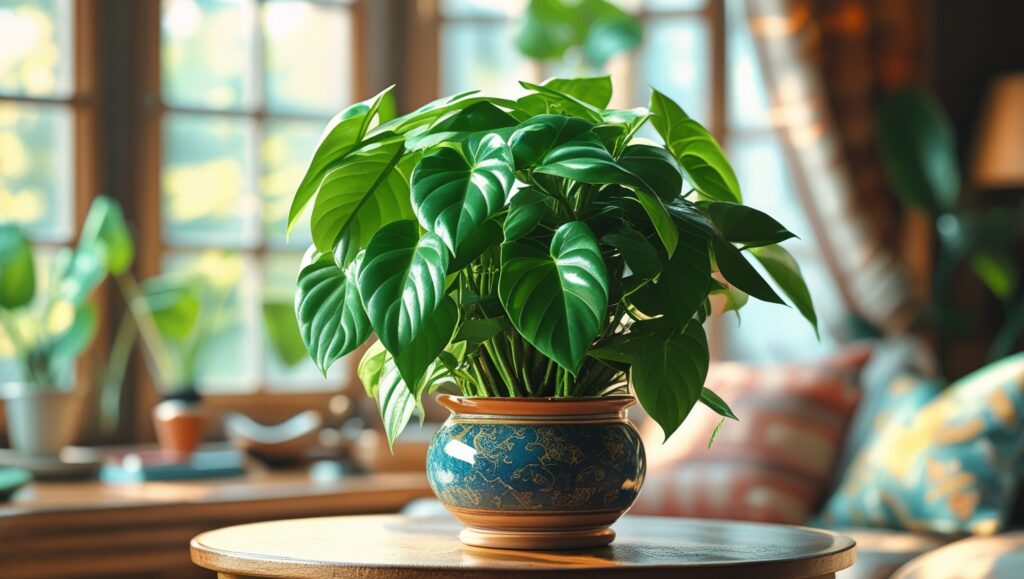
Proper Watering Techniques to Keep Your Money Tree Healthy
Watering a Money Tree Plant (Pachira aquatica) correctly is crucial for its overall health and growth. Inadequate watering—whether too much or too little—can result in wilting, yellowing leaves, and even root rot. By understanding its moisture needs and adapting watering practices to its environment, anyone can help their Money Tree Plant thrive.
Signs of Overwatering and Underwatering
Knowing the signs of watering issues enables better care. Overwatering often leads to drooping leaves, soggy soil, and a foul scent from rot. In contrast, underwatering produces dry soil, curled or brittle leaves, and stunted growth. Observing the plant regularly ensures subtle changes are caught early.
Frequency of Watering
The Money Tree Plant does not require constant watering. Typically, it thrives best when watered every 1-2 weeks, depending on the season. During warm months, growth intensifies, so it may need more frequent hydration. In cooler months, when growth slows, reduced watering prevents oversaturation.
Checking Soil Moisture
Before watering, it’s essential to check the soil’s moisture level. Insert a finger one to two inches into the soil; if it feels dry, it’s time to water. Alternatively, plant enthusiasts can use moisture meters for precise readings.
Watering Method
A thorough soak is preferred over light sprinkling. Water should be added until it drains from the pot’s bottom holes, ensuring the entire root system gets adequate hydration. However, standing water in saucers should be discarded promptly to prevent root rot.
Type of Water
The Money Tree Plant prefers room-temperature, clean water. Avoid using hard water with excessive chemicals, as it may harm the plant over time. Distilled or filtered water is often ideal, especially if the tap water is high in minerals.
Adjusting for Environment
Factors such as indoor humidity, pot size, and sunlight exposure affect watering needs. For example, homes with low humidity may cause quicker soil drying. Regularly monitoring conditions and adapting watering ensures optimal growth conditions.
Properly watering a Money Tree Plant doesn’t just maintain its health—it allows its unique beauty to flourish.
Sunlight and Temperature Requirements for Optimal Growth
The Money Tree Plant (Pachira aquatica) thrives in environments that mimic its native tropical habitat. Ensuring the right amount of sunlight and maintaining an ideal temperature are essential for the plant’s healthy growth and development.
Sunlight Requirements
Money Tree Plants prefer bright, indirect sunlight to grow vigorously. Direct sunlight can be harmful, causing the leaves to scorch or fade over time. Positioning the plant near a north- or east-facing window can provide ample light without risking damage. For homes or spaces with limited natural light, artificial grow lights can supplement its needs effectively. However, too little light can lead to slow growth and weakened stems, so consistency in exposure is vital.
Ideal Sunlight Conditions:
- Bright but indirect light.
- Avoid direct exposure during peak daylight hours.
- Supplement with grow lights in low-light environments.
Temperature Preferences
The Money Tree Plant thrives in warm, stable temperatures, as sudden changes can stress the plant. A range of 65°F to 80°F is optimal, and it should be kept away from drafts, air conditioning vents, or heaters that might cause fluctuations. Cold temperatures below 50°F can hinder its growth and, in extreme cases, may even result in permanent damage. This plant requires a tropical-like environment to flourish, making proper temperature control crucial.
Key Temperature Tips:
- Maintain a consistent range between 65°F and 80°F.
- Avoid exposure to sudden temperature changes.
- Do not place the plant near cold drafts or heating sources.
Understanding the sunlight and temperature preferences of the Money Tree Plant ensures optimal conditions for its growth, enhances its overall health, and helps to maintain its lush appearance. Proper care in these areas directly impacts how the plant thrives in indoor environments.
How to Fertilize Your Money Tree Plant for Maximum Longevity
Fertilization is an essential part of caring for a Money Tree Plant (Pachira aquatica) to ensure robust growth and prolonged health. Understanding when, how, and what type of fertilizer to use can significantly impact the plant’s longevity.
Choose the Right Fertilizer
A balanced, water-soluble fertilizer with equal parts nitrogen (N), phosphorus (P), and potassium (K)—denoted as 10-10-10 or 20-20-20 on the packaging—is ideal for Money Tree Plants. Organic options, such as worm castings or fish emulsion, are also beneficial for providing nutrients without the risk of over-fertilization.
Establish a Feeding Schedule
Money Tree Plants should generally be fertilized during their active growing season, typically spring through early fall. Feeding every 4-6 weeks during this period ensures a steady supply of nutrients. Avoid fertilizing during late fall and winter, as the plant enters dormancy and excessive feeding may harm it.
Proper Application Techniques
Fertilizer should always be applied after watering the soil to prevent root burn. Diluting liquid fertilizer to half the recommended strength before application minimizes the risk of over-fertilization. For granular fertilizers, a thin layer should be spread evenly over the soil surface, then watered thoroughly to help the nutrients penetrate the soil.
Signs of Over- or Under-Fertilizing
Yellowing leaves, brown tips, or slowed growth can indicate over-fertilization, while pale leaves or stunted growth may signal nutrient deficiencies. Adjust the feeding frequency and concentration accordingly if either condition occurs.
Enhance Longevity with Care
Complement consistent fertilizing with proper watering, sufficient light, and occasional pruning to prevent nutrient depletion and encourage healthy growth. These practices, combined with a suitable fertilization routine, can ensure your Money Tree Plant thrives for many years.
Pruning and Maintenance Tips to Keep Your Plant Thriving
Money Tree Plants, or Pachira aquatica, require regular pruning and careful maintenance to ensure their health and robust growth. Pruning serves multiple purposes, such as promoting new growth, maintaining the plant’s shape, and preventing it from becoming overcrowded. Proper care ensures longevity and keeps the plant thriving in various conditions.
Pruning Money Tree Plant
- Identify areas to prune: Look for dead or yellowing leaves, overgrown stems, or branches that appear leggy. Damaged leaves can sap energy from the plant, so removing them will redirect nutrients to healthy parts.
- Use clean, sharp tools: Always use sterilized pruning shears or scissors to minimize the risk of infection. Blunt tools may tear the plant, leaving it vulnerable to diseases.
- Trim selectively: Cut stems just above a node or leaf to encourage new growth. Avoid excessive pruning, as cutting more than one-third of the plant at a time can stress it.
- Shape regularly: To maintain the desired appearance, lightly prune around the canopy, especially if the Money Tree Plant begins to look uneven or sparse. This is particularly important when working with braided stems, as symmetry enhances their appeal.
General Maintenance
- Watering: Ensure the soil dries out slightly between waterings to avoid root rot. Use a pot with drainage holes to prevent waterlogging, and adjust the frequency based on seasonal changes.
- Fertilizing: Feed the Money Tree Plant with a balanced liquid fertilizer every month during spring and summer. Reduce fertilization in fall and winter when growth naturally slows down.
- Lighting: Position the plant in bright, indirect light, as direct sunlight can scorch its leaves. Consider rotating the pot occasionally to encourage even growth.
- Humidity and temperature: Maintain indoor humidity levels around 50%. Using a humidifier or placing a tray of water nearby can help. The ideal temperature is between 65–75°F, avoiding drafts or sudden temperature fluctuations.
- Pest management: Watch for common pests like spider mites or mealybugs. Wipe leaves with a damp cloth or apply insecticidal soap to manage infestations effectively.
Regular care not only preserves the aesthetic appeal of the Money Tree Plant but also supports its overall health and vitality. Attention to detail, from pruning to daily upkeep, ensures the plant remains a thriving centerpiece in any environment.
Common Problems and How to Troubleshoot Them
Planting and caring for a Money Tree Plant (Pachira aquatica) can come with challenges. Understanding common problems and their solutions is essential for maintaining its health and beauty.
1. Overwatering
Overwatering is one of the most common issues, leading to root rot. Signs include yellowing leaves and a rotting smell from the soil. To troubleshoot, check the soil moisture by sticking a finger about two inches deep; it should feel slightly dry before watering. If the soil is waterlogged, repot the plant into fresh, well-draining soil, trimming any rotting roots beforehand.
2. Underwatering
Underwatering can lead to drooping leaves and dry, brittle stems. Inspect the topsoil; if it feels dry and crumbly, increase watering frequency. However, avoid sudden overwatering as it can shock the plant. Gradually return to a regular watering schedule where the soil remains consistently slightly moist.
3. Leaf Discoloration
Yellow or brown leaves may indicate poor lighting conditions, pest infestations, or nutrient deficiencies. Bright, indirect sunlight is ideal for a Money Tree Plant, and any prolonged exposure to direct sunlight should be avoided to prevent scorching. Adding a balanced, water-soluble fertilizer can restore proper nutrients. For pest issues like spider mites, use neem oil or insecticidal soap to eradicate them effectively.
4. Dropping Leaves
Leaf drop often occurs due to abrupt changes in environment, such as temperature fluctuations or moving the plant to a new location. Ensure stable conditions, with temperatures between 65°F-75°F, and avoid drafts from windows or vents. Gradually acclimate the plant to a new spot rather than relocating it suddenly.
5. Fungal Growth
Fungal infections can stem from excess humidity or poor air circulation. If fungal spots appear on leaves, remove the affected parts and treat the plant with a fungicide. Place the plant in a location with better airflow and reduce misting.
Addressing these common issues promptly ensures the Money Tree Plant thrives and remains healthy indoors or outdoors.

Benefits of Growing a Money Tree Plant in Your Home
The money tree plant, scientifically known as Pachira aquatica, offers more than just an appealing touch to home decor. Its benefits extend to various physical, mental, and cultural aspects, making it a valuable addition to indoor spaces.
1. Brings Positive Energy
- According to Feng Shui principles, the money tree plant is believed to attract prosperity, wealth, and good fortune. Its five-lobed leaves are said to represent the elements of wood, water, metal, fire, and earth, harmonizing the energy in your home.
- It is also considered a symbol of resilience and luck, promoting positivity in one’s environment.
2. Improves Air Quality
- Like many houseplants, the Money Tree Plant enhances indoor air quality by absorbing carbon dioxide and releasing oxygen. This can help mitigate pollutants and create a fresher living space.
- It may also contribute to balancing humidity levels, especially in dry indoor environments.
3. Low Maintenance
- The money tree plant requires minimal effort to thrive, making it an attractive choice for busy homeowners or beginners. Its ability to adapt to various light levels and minor watering inconsistencies allows for flexible care routines.
4. Aesthetic Appeal
- The braided trunk and lush, glossy green leaves add elegance to any room. Its unique appearance makes it a natural centerpiece or a complementary addition to any interior style.
5. Mental Health Benefits
- Growing a money tree plant can contribute to stress reduction. Caring for plants has been shown to improve focus, alleviate mental fatigue, and promote relaxation.
- Adding greenery to living spaces can also create a calming and inviting ambiance, benefitting overall emotional well-being.
6. Easy Propagation for Gifting
- The money tree plant can be propagated with ease, allowing homeowners to share it with friends and family. Passing on such a plant fosters connections and continues the tradition of spreading good luck and abundance.
By integrating a money tree plant into a home, one can enjoy a combination of aesthetic beauty, cultural significance, and practical benefits that enrich both the living environment and personal well-being.
Frequently Asked Questions About Planting a Money Tree Plant
What Type of Soil Is Best for a Money Tree Plant?
Money Tree Plants thrive in well-draining soil with a balanced mix of organic matter and nutrients. A peat-based potting mix or loamy soil enriched with perlite is ideal, as it provides aeration and retains enough moisture for the plant’s roots. Avoid dense or overly water-retentive soils that can lead to root rot.
Does a Money Tree Require Direct Sunlight?
Money trees prefer bright, indirect sunlight. Placing the plant near a window with filtered light ensures healthy growth. Direct sunlight can scorch its leaves, while low-light conditions may hinder its development. If light is inadequate, using a grow light can help supplement its needs.
How Often Should You Water a Money Tree?
The money tree requires consistent but moderate watering. Water the plant when the top inch of soil feels dry, typically every 1–2 weeks. Ensure that excess water drains out, as these plants are prone to root rot when they sit in soggy soil. During winter months, reduce watering frequency.
Is Fertilizer Necessary for a Money Tree?
Yes, the money tree benefits from occasional fertilization to maintain its health. Use a balanced liquid fertilizer diluted to half strength during the growing season, typically spring and summer. Avoid over-fertilizing, as this can harm the roots. Fertilization is unnecessary during dormancy in winter.
Can a Money Tree Be Grown Outdoors?
Money trees can be grown outdoors in tropical and subtropical climates where temperatures remain above 60°F year-round. They need protection from strong winds and prolonged exposure to direct sunlight. In cooler regions, they are better suited as indoor plants.
How Do You Prune a Money Tree?
Pruning helps regulate the plant’s size and promotes bushy growth. Cut away dead, damaged, or yellowing leaves using clean, sharp shears. If the tree becomes too tall, trim the top leaves to encourage lateral growth. Always check for pests before pruning and disinfect tools afterward.
What Are Common Issues With Money Trees?
Common issues include root rot from overwatering, leaf drop due to insufficient light, and pests such as scale insects and mealybugs. Yellowing leaves can signal overwatering or nutrient deficiencies. Address these issues promptly to avoid harming the plant’s overall health.
How Can You Propagate a Money Tree?
Money trees can be propagated through cuttings. Select a healthy stem with fresh growth and cut it below a node. Place the cutting in water or moist soil, ensuring the node remains submerged. With proper humidity and indirect light, roots will develop within a few weeks.
Are Money Trees Toxic to Pets?
Money trees are considered non-toxic to cats and dogs. However, ingestion of the leaves could cause mild stomach upset in pets. It is best to keep the plant out of reach to prevent chewing or accidental damage to either the plant or your pets.
Conclusion: The Joy of Cultivating Your Own Money Tree
Planting and nurturing a money tree, whether the mythical idea inspires you or you’re drawn to the beauty and charm of the Pachira aquatica, offers more than just aesthetic value. This journey combines basic horticultural practices with an opportunity for mindfulness and connection to nature. It begins with selecting the perfect location where the tree can thrive, ensuring it receives adequate but indirect sunlight, followed by careful planting and weekly care tailored to its unique needs. Every element, from watering to pruning, contributes to its health and vigor.
Cultivating a money tree demands attentiveness, but it also rewards the grower with lush green leaves and steady growth, creating an attractive focal point for any indoor or outdoor space. Proper care enhances the symbolism of prosperity and good luck this plant carries in many cultures around the world. Routine pruning not only ensures the money tree remains in excellent shape but also provides an opportunity to learn about propagation, where cuttings can be transformed into new plants, extending this rewarding experience.
Furthermore, its adaptability makes it suitable even for novice gardeners. As a low-maintenance plant, the money tree is forgiving of occasional lapses in care, which adds to its enduring appeal. When matched with stylish pots, rocks, or decorative soil, it becomes a living art piece that complements interior design. The satisfaction derived from watching every leaf unfurl, knowing your hands have played a role, contributes to the joy of cultivating this beloved plant.
Ultimately, growing a money tree fosters appreciation for life’s small victories and personal efforts while offering a tranquil element to everyday surroundings.
Click the link below to buy “FLOWER Retro Wooden Stand Plant Terrarium with 3 Bulb Glass Vases for Hydroponic Home & Office Décor”
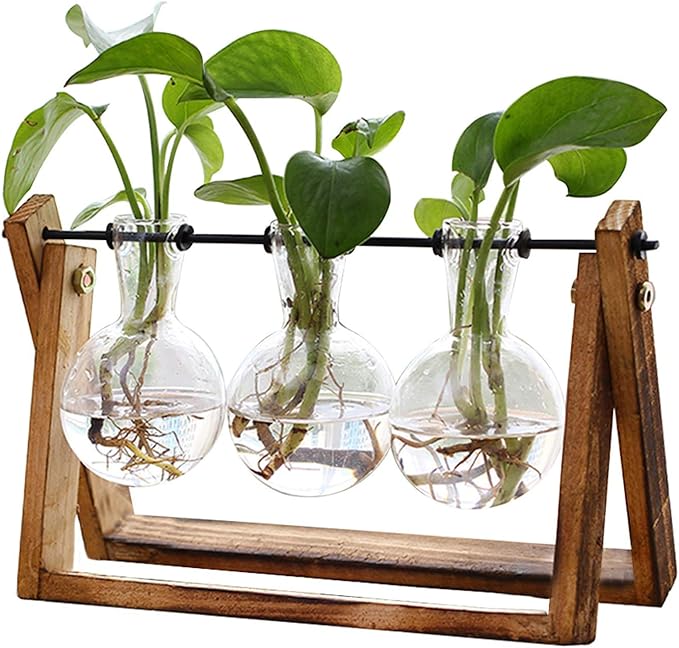
Click the link below to buy “6-inch modern ceramic planter with glaze, drainage hole, and saucer for indoor & outdoor plants.”
